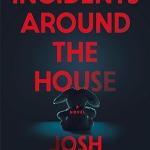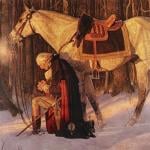Blog tours are interesting.
You find readers who really “get” what you’ve written, who provide fascinating interpretations and useful criticism, and you find readers who really don’t connect with your work. Sometimes you read criticism that leaves you puzzled.
Here are a few moments from the Raven’s Ladder blog tours I found interesting:
S.J. Deal makes predictions here about what will happen in Book 4. He has some very perceptive ideas about the chapters I’m currently writing. Is he spying on me?
Robert Treskillard considers the three “houses” (or societies) that we’ve explored in the series so far. He says:
In each of these houses we see echoes of our own western society—the focus on self-fulfillment, youth, power, fads, and luxury. And this is the chief danger, the primary tool that the seers use to entrap the citizens and the royalty.
While book two is filled with horrific, physical danger at the hands of beastmen, book three has the subtler, serpentine danger of the temptation to forget one’s calling, one’s history, and go with the flow, stop caring, and give in.
Oooh. “Subtler, serpentine danger.” I like that phrase. It sums up very well the kind of tension I feel when I visit my characters in House Bel Amica. The Seers have been poisoning that city, and their presence does feel strangely serpentine.
In the fourth book, the White Strand of The Auralia Thread, The Ale Boy’s Feast, we’ll learn just who the Seers are (although there have been strong hints along the way), and find out their motivation.
From Brandon Barr’s blog:
I thought it was interesting that the book was marketed as a stand alone book. Nowhere on the cover does it indicate that it is a part of a trilogy.
There’s a badge on the back of the book that calls it “The Gold Strand of The Auralia Thread,” but the badge is so small that it’s almost unreadable. A lot of readers have been confused by the lack of reference to a series, and I can understand why. If I started reading The Lord of the Rings by picking up The Return of the King, I’d be confused as well!
But there are a few exceptions.
Becky Burnham says,
I have not read the first two books, and I was a little lost at first, but I soon became entangled in this fantastic tale.
Thank goodness! I certainly don’t aim to confuse people.
Melissa Carswell:
Like the prophets of old, Cal-raven sees the danger, speaks the danger, and is not heeded.
I like the comparison of Cal-raven to a prophet. In a way, the whole series is about prophets. Auralia is a prophet who gives people a vision of a better world through art. And Cal-raven tries to give his own prophetic vision a shape by establishing a better house than the one his father governed.
Valerie Comer:
In this third installment of the story, Overstreet allows his poetic voice free rein.
Oh! I have to respond to this. I have a few pet peeves as a reader. One of them is when a writer uses the phrase “free reign.” There is no such thing as “free reign.” Valerie’s got it right. It’s a term that comes from horsemanship. When you really let the horse run at a full gallop, you’re giving the horse “free rein.” Thank you, Valerie!
Stacey Dale:
The elements in this novel are so much like real life, it’s scary. The fear that comes from the truth being twisted into a lie is so true-to-life…
Should I admit that it’s satisfying to know that the villains in this story are really scaring some people?
I must mention that one thing I really appreciate about this novel is the guide in the back of the book to the characters.
I’m glad that the guide is coming in handy. There are a lot of characters in this book!











